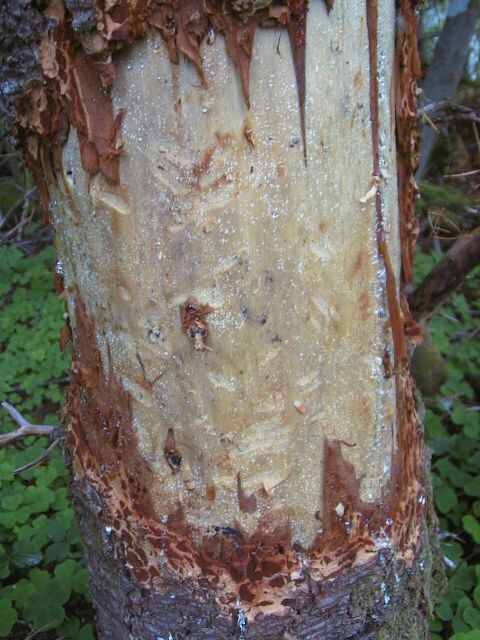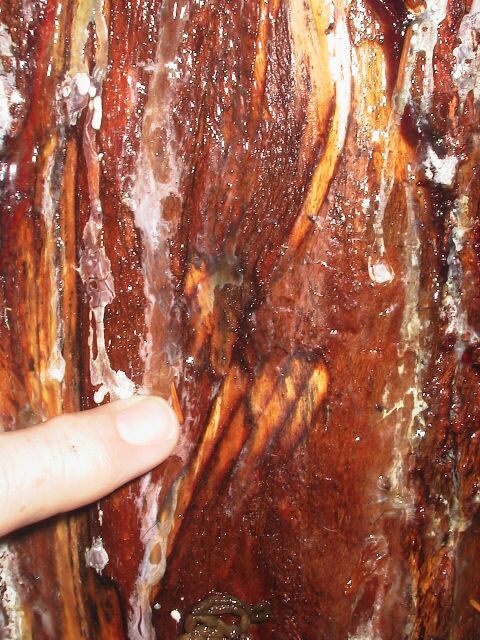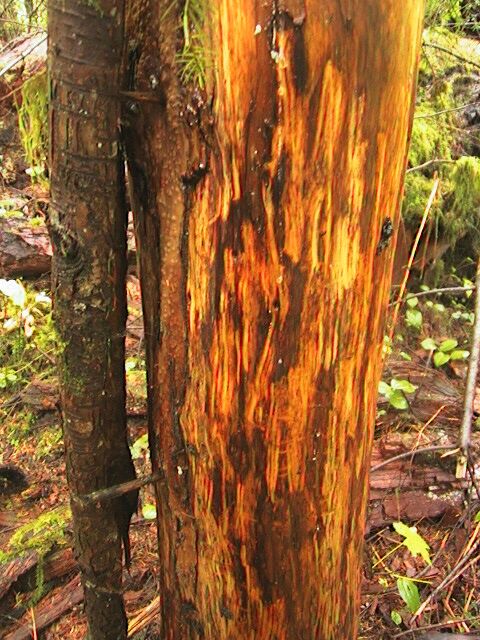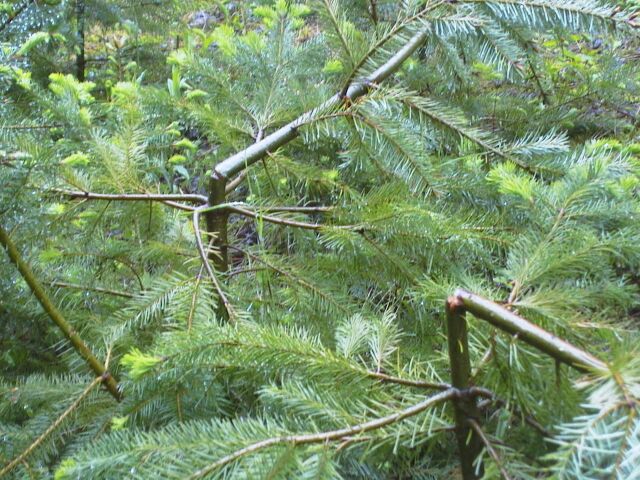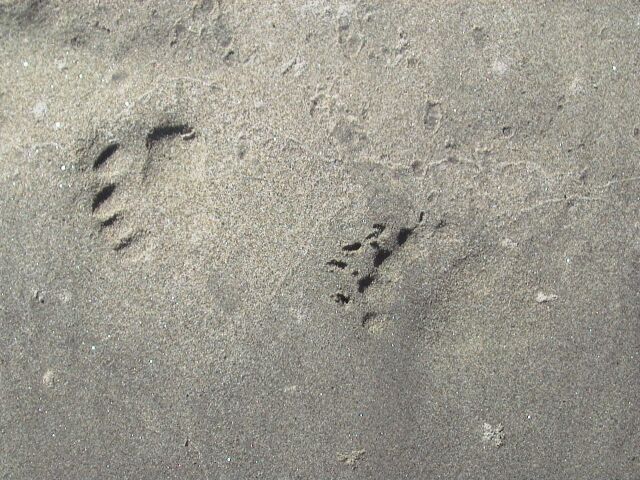
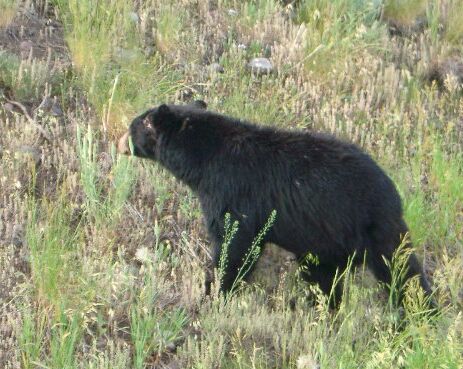
I have encountered black bear sign along many of our rivers in the northwest states and muddy sections of roads or trails. Many of these bears were living close to civilization yet largely escaped detection.
Black bears are primarily herbivores. They will eat carrion and insects but they depend more on plants. In the spring, grass and forbs make up much of their diet. In summer, attention shifts to berries and fruits. In fall, nuts and berries are important. Foods high in protein or fats are especially valuable in both the spring (after hibernation) and fall (in preparation for hibernation). Much of the sign you will see relates to their foraging behavior. Bears hibernate so tracks in snow are rare.
Below I present tracks, gait, scat, tree damage, and other sign. I recently had an opportunity to follow a very fresh bear trail and document the sign.
Main Salmon River, Idaho

Paradise Hills, Gifford Pinchot
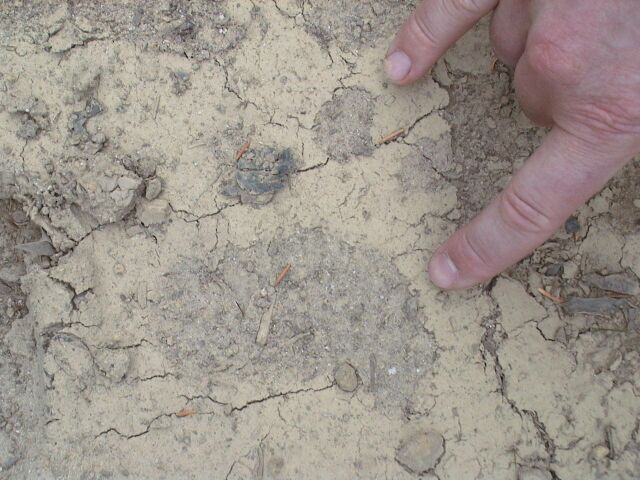
Oxbow Park, Oregon on a frosty morning.
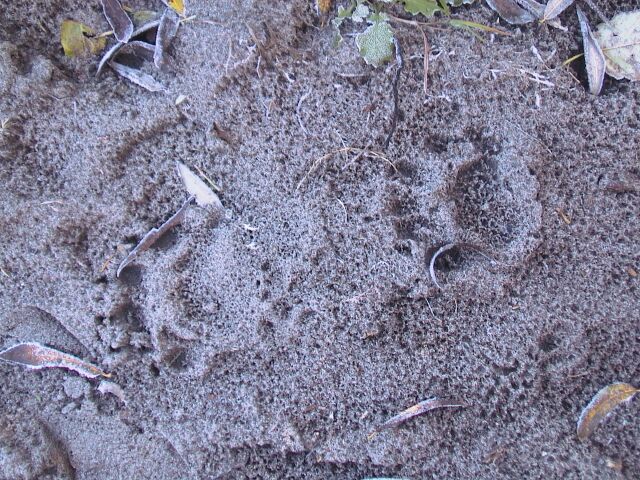



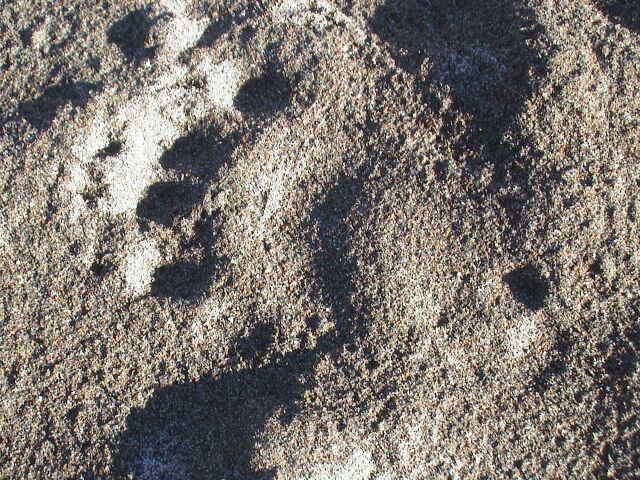
Surveyor Ridge near Hood River after a fresh snow.
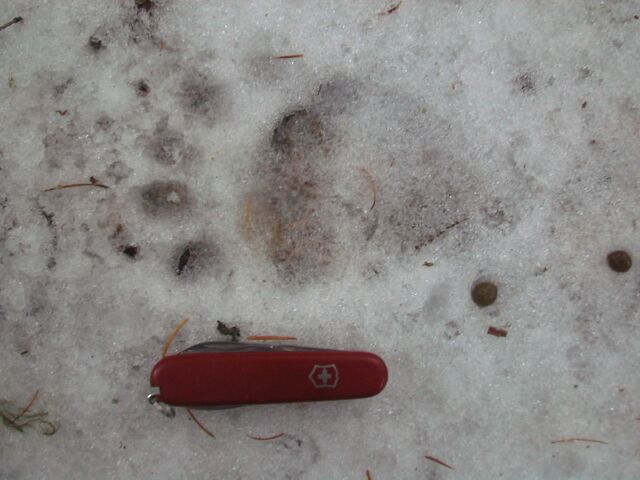
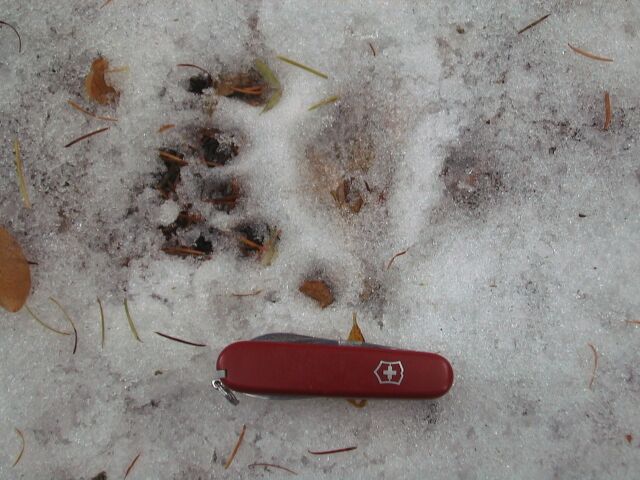
We found this scat full of crab apples in Silver Falls State Park near Salem, Oregon, during
our bear and cougar census. Another team found a damaged crab apple tree nearby. The big bear that left this scat nearly ran into me on the flanks of Mt. Hood. I found this scat in a dry Ponderosa Pine forest near Klammath Falls, Oregon. The light colored scat in this photo from Southeast Alaska reflects a barnacle diet while
the dark scat resulted from a blueberry diet.
Burnt Peak and Trout Creek Hill, Gifford Pinchot, Washington
Silver Falls Park, Oregon
It appears that bears often attack and bite young trees as in this photo.
Gait
Walking gait on Surveyor Ridge near Hood River after a fresh snow.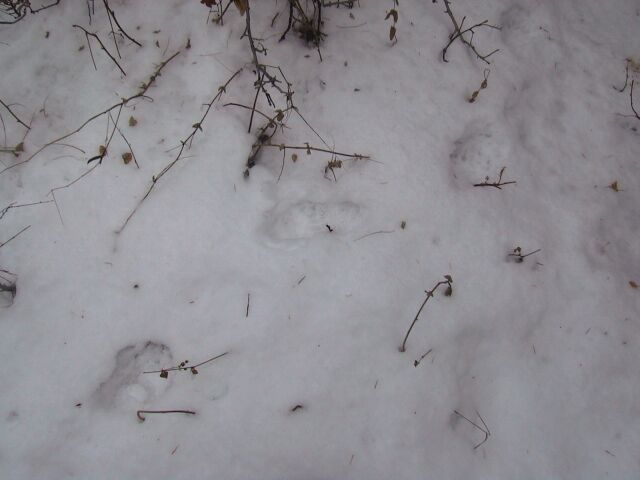
Scat

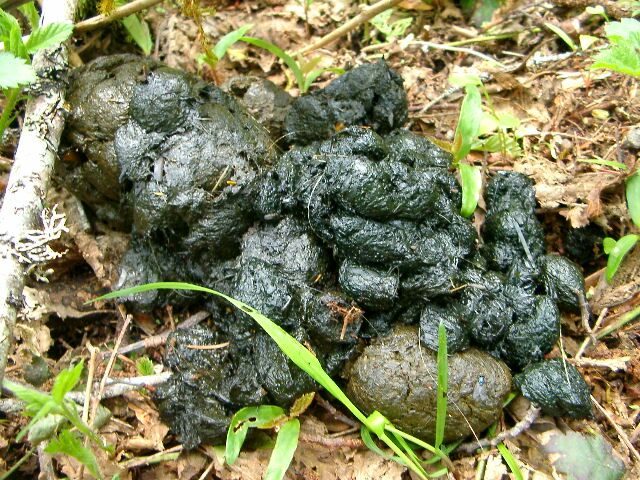
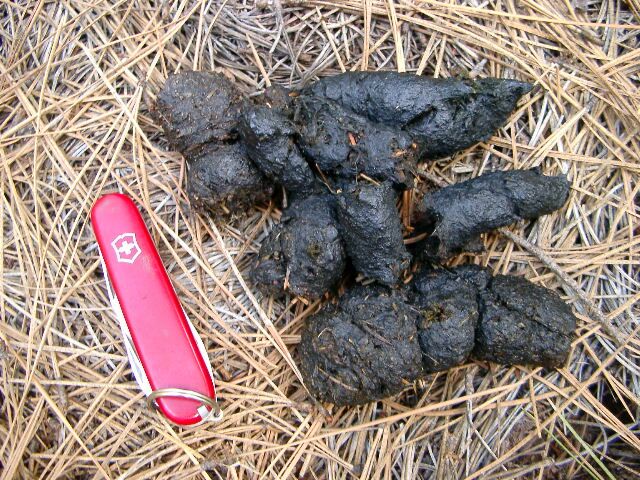
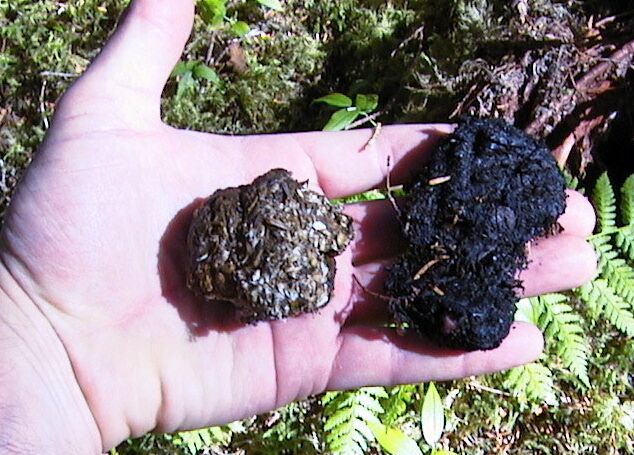
Trees
Black bears will often tear the bark off the base of a tree and scrape the inner bark with incisors.
You can sometimes find a piece of bark from the scene with claw marks. Bears appear to favor
western hemlock, mountain hemlock, and lodgepole pine, at least in the Pacific Northwest. 
